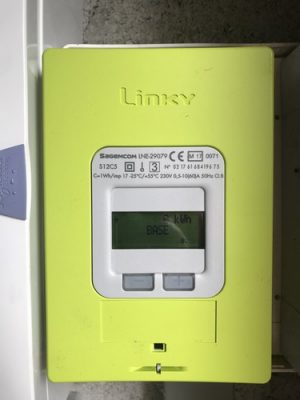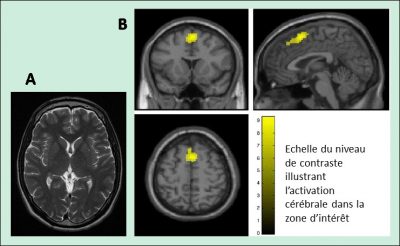Electromagnetic hypersensitivity
PDF1. Real symptoms of unknown origin

More than 50 so-called challenge studies have been conducted in a double-blind fashion to determine whether subjects with self-declared electrosensitivity or electromagnetic hypersensitivity (EHS) were able to detect the presence of an electromagnetic field. These studies showed no difference in the perception of electromagnetic waves between EHS and non-EHS individuals. Indeed, the rate of correct answers obtained by both groups is not different from the one obtained “by chance”. In 2005, the WHO identified electromagnetic hypersensitivity as an idiopathic environmental intolerance (IEI) attributed to electromagnetic fields [2].
Other syndromes related to IEI include multiple chemical hypersensitivity (or chemical odour intolerance) [3], sick building syndrome [4] (environmental air), Gulf War syndrome [5], noise hypersensitivity [6] , and wind tunnel syndrome [7]. It has been observed on many occasions that some people can accumulate several IEIs simultaneously. More generally, these syndromes are similar to medically unexplained disorders [8]. The symptoms and suffering are very real and can become disabling, particularly due to avoidance behaviours, the extent of the disorders experienced and the isolation that can result.
2. Can information play a role in the appearance of disorders?
It has been shown that disturbing information on the dangers of electromagnetic waves can promote the appearance of various symptoms in “normal” subjects (with no preconceived notions about the effects of waves and no pre-existing health problems). It is indeed possible to induce the appearance of symptoms in non-EHS people, simply by making them believe that they are exposed, all the more so if a frightening picture of the effects of waves has been presented to them beforehand [9],[10],[11]. The analysis of the psychological profile indicates a stronger tendency to somatization in some subjects. Other studies indicate a greater attention to environmental factors and an increased tendency to anxiety without a clear typical profile emerging. This has reinforced the hypothesis of a nocebo effect, also reported in the challenge studies. The nocebo effect is a mechanism comparable to the well-known placebo effect, but with opposite effects: an expected negative effect occurs when the person thinks that the cause is present.
3. How is the self-diagnosis constructed?

The notion of socio-cognitive exposure had been proposed [13], joining that of “cognitive opportunism” [14], where the individual suffering from symptoms for which he or she has no satisfactory explanation, thus finds a cause as soon as he or she can conceive one in his or her environment. Clearly, there are different paths that lead people to declare themselves EHS. To date, no biological or psychological marker allows a medical diagnosis of electromagnetic hypersensitivity on a scientifically validated basis.
4. Underlying mechanisms

5. Patients in search of recognition
People who claim to suffer from EHS and are supported by associations have a strong demand for recognition of their condition, but also of the fact that waves are the cause. They are also targeted by actors who take advantage of the situation by selling equipment supposedly protecting them from waves [19], field strength measurement devices, etc. In the absence of objective confirmation, the problem is regularly transferred to the judicial arena [20]. The outcome of a few court cases in favour of the plaintiffs is seen as recognition. The court decision is often presented as proof that the waves cause symptoms [21]. In conclusion, EHS suffer from real pain without scientific studies showing a causal link between the symptoms experienced and exposure to waves.
Notes and references
Cover image. [Source: Vincent van Gogh, Public domain, via Wikimedia Commons]
[1] https://www.lemonde.fr/les-decodeurs/article/2018/10/22/linky-en-questions-les-ondes-du-compteur-sont-elles-dangereuses_5372938_4355770.html
[2] World Health Organization (2005), Electromagnetic fields and public health: electromagnetic hypersensitivity. Fact sheet 296. On who.int
[3] Conso F., Dargone M.-A., Asselain D., Choudat D. Idiopathic environmental intolerance (multiple chemical sensitivity). Environment, Risks & Health. 2010;9(5):393-400.
[4] Marchand D., Weiss K., Laffitte J.-D. Sick building syndrome or collective psychogenic syndrome? Environment, Risks & Health. 2010;9(5), 401-407.
[5] Minshall D. Gulf War Syndrome: a review of current knowledge and understanding. J R Nav Med Serv. 2014;100(3), 252-8.
[6] Nicolle-Mir L., 2017, Symptoms, health, healthcare use: what characterizes noise hypersensitivity?, Yearbook health and environment, Vol.16, n°3, May-June 2017.
[7] Simos J, Cantoreggi N, Christie D, Forbat J. Wind turbines and health: a review with suggested recommendations. Environ Risk Health 2019; 18: 1-11. doi: 10.1684/ers.2019.1281
[8] Cathebras P, Functional disorders and somatization. How to approach medically unexplained symptoms. Paris, Masson. 2006.
[9] Szemerszky R., Köteles F., Lihi R., Bárdos G. Polluted places or polluted minds? An experimental sham-exposure study on background psychological factors of symptom formation in ‘Idiophatic Environmental Intolerance attributed to electromagnetic fields. Int J Hyg Environ Health. 2010;213(5), 387-94
[10] Witthöft M., Rubin GJ. Are media warnings about the adverse health effects of modern life self-fulfilling? An experimental study on idiopathic environmental intolerance attributed to electromagnetic fields (IEI-EMF). J Psychosom Res. 2013;74(3), 206-12.
[11] Bräsher AK et al, “Are media reports able to cause somatic symptoms attributed to wifi radiation? An experimental test of the negative expectation hypothesis,” Environ Res, 2017, 156:265-71.
[12] Dieudonné M., 2019, Becoming electro-hypersensitive: A replication study. Bioelectromagnetics. 40(3):188-200. doi: 10.1002/bem.22180.
[13] Poumadère M., Perrin A. Socio-cognitive exposure and risk assessment: the case of mobile telephony, Radioprotection. 2011;46(1), 46-73.
[14] Bronner G., Géhin E. L’inquiétant principe de précaution. Paris, PUF. 2010.
[15] For more information, see the Anses report, Hypersensibilité électromagnétique ou intolérance environnementale idiopathique attribuée aux champs électromagnétiques, March 2018.
[16] A medical imaging technique that allows active areas of the brain to be visualized in real time.
[17] Landgrebe M et al. Neuronal correlates of symptom formation in functional somatic syndromes: A fMRI study. NeuroImage, 41 (2008) 1336-1344
[18] Perrin A., Electromagnetic hypersensitivity, EDP-Science, Yearbook 2018.
[19] Electrosensitivity. Un marché florissant, Que Choisir, 31/8/2014. On quechoisir.org
[20] Perrin A. & Souques M., Médiatisation d’un jugement en faveur d’un électrosensible : à qui profite vraiment le buzz ? European scientist, Nov 2018. On europeanscientist.com
[21] https://www.ledauphine.com/actualite/2019/08/09/electro-sensibilite-et-compteur-linky-la-justice-tranche




